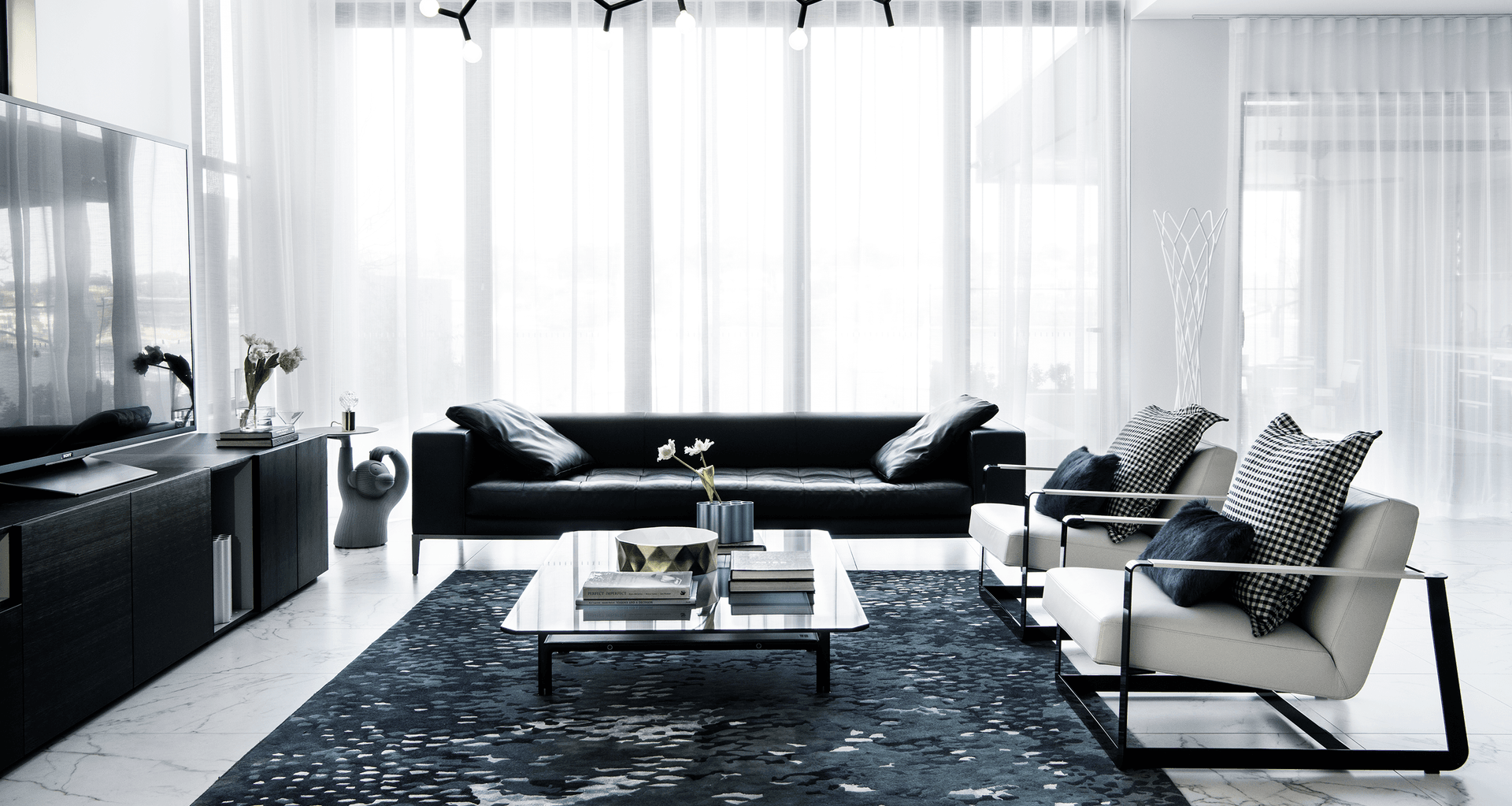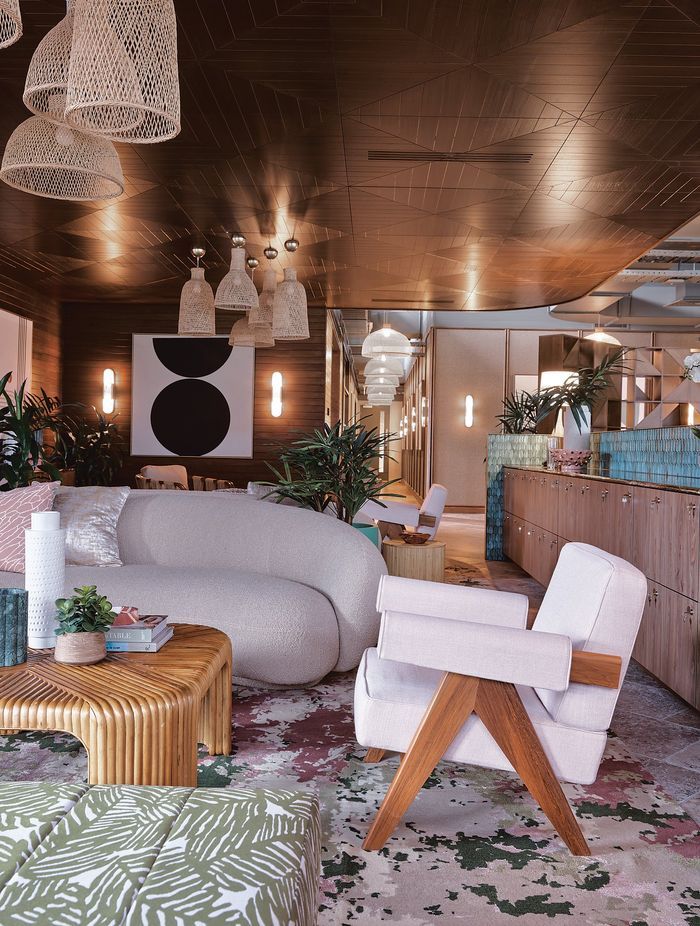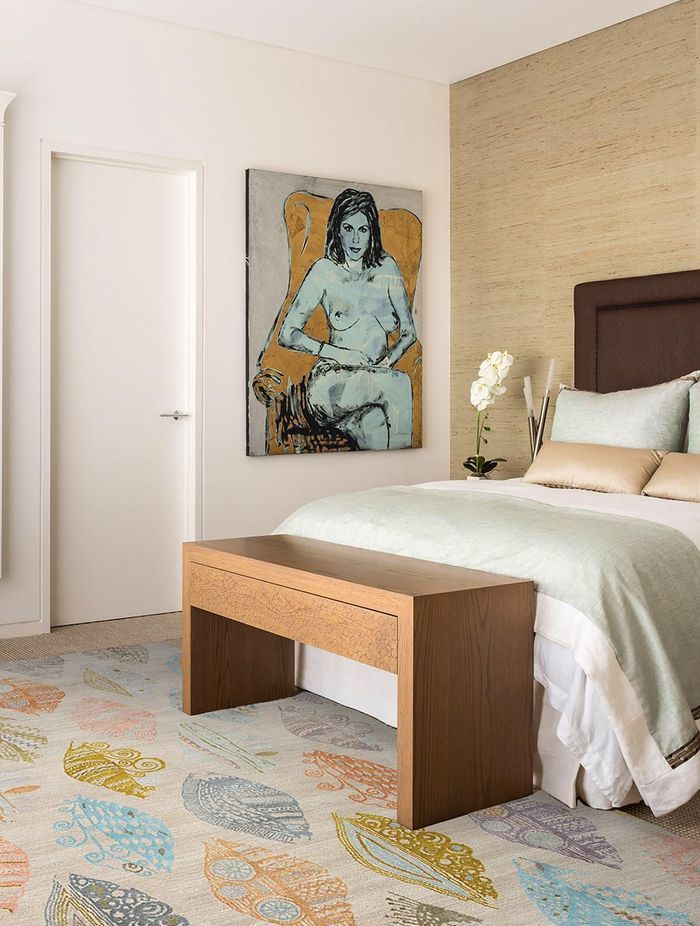Rug up: how to use rugs to define and delineate spaces
Written by
13 February 2023
•
4 min read

When it comes to dividing a room, we often think vertically; with screens, shelving units, and portieres coming to mind. However, thinking horizontally can be just as effective. Rugs can be used to define areas in open-plan spaces while maintaining a cohesive interior design style and have the added benefit of not making a space appear smaller.
In addition to defining and delineating spaces, the right area or throw rug offers the opportunity to inject a touch of personality and individuality into your home.
How to select the right rug for your space
Here are the factors you need to consider when choosing an area rug.
Size matters (so does shape)
The size and shape of your rug should be proportional to the space it will occupy; a smaller rug placed in a larger room may look like an afterthought, while an oversized rug can make an already small room feel cramped. When it comes to shape, consider both the room's layout and the furniture placed on top of the rug.
A sensorial symphony
The colour, pattern, and texture of your rug can make a big impact on the overall look and feel of a room. When selecting a colour, think about how you want the rug to complement or contrast with your existing decor. Colour trends come and go, so it’s best to select something that suits your personal style and works cohesively with your existing decor.
Patterns can also play a role in creating a focal point or be used to tie different design elements together. Finally, consider the rug's texture – something soft and plush can add warmth and comfort underfoot, while a coarser texture such as rattan or hessian can create a more rustic or earthy vibe.
Material values
The material of your rug can greatly impact its longevity, maintenance, and overall look and feel. Natural fibres like wool and cotton are soft, durable, and naturally stain-resistant. Synthetic fibres, such as polypropylene or nylon, are often more affordable and can be treated to resist stains and fading. When choosing a material, consider your lifestyle and any potential spills or stains that may occur in the space.
Read more: The bold and the beautiful: a guide to buying and styling statement rugs
How to use rugs to define and delineate spaces
Focus on me
One of the most impactful ways to use a rug is to create a focal point in a room. Whether it's a bold pattern, an eye-catching colour, or an intricate texture, a well-placed rug can draw the eye and anchor the space. To create a visual point of interest, try positioning your rug in front of a statement piece of furniture, such as a sofa or accent chair.
Separating and defining spaces with ease
For those with open-plan living spaces, rugs can be used to separate different areas and create a sense of definition. Whether you're dividing a living room from a dining area, or separating a kitchen from a family room, a well-placed rug can serve as a visual boundary and help define the function of each space. Try positioning your dining table atop an area rug, or angling your living room furniture around a statement iteration to create separate ‘zones’ within a space.
Read more: Dream weaver: discovering the joy of rugs with Jenny Jones
Enhancing a room’s aesthetic
Rugs can be used to elevate the overall style of a room. Whether you're going for a traditional, bohemian, or contemporary look, the right rug can help solidify your design vision. Patterned Persian rugs are an apt fit in bohemian or maximalist spaces, while braided rugs made from materials such as wool, jute or cotton work well in rustic or modern farmhouse interiors.
Explore more interior design advice on ArchiPro.


